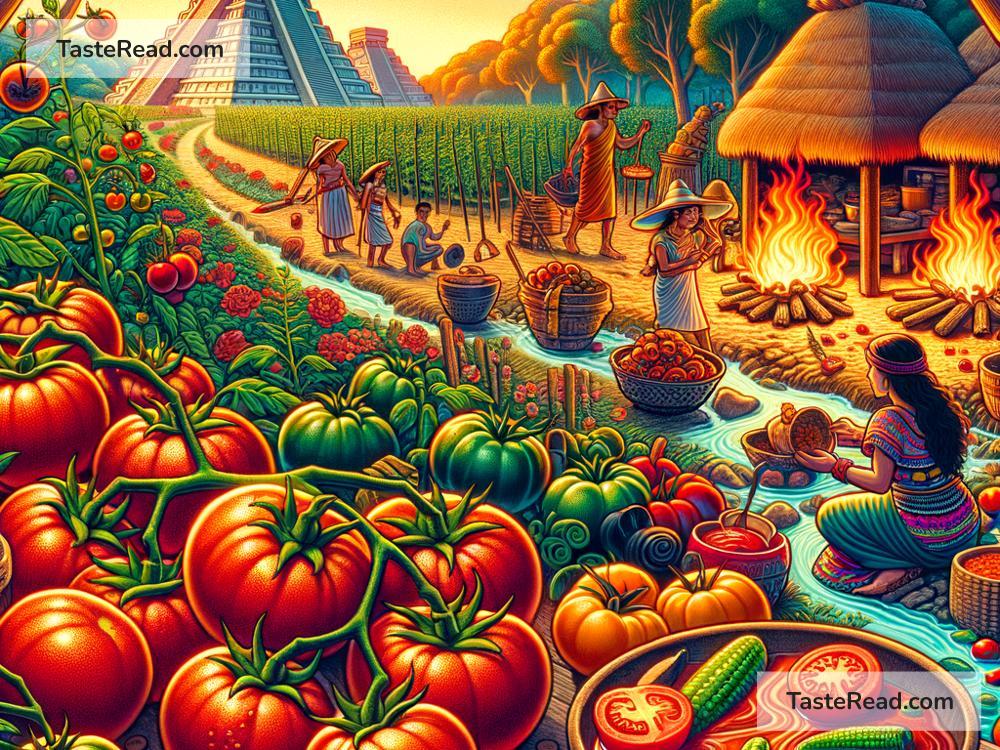The Colorful History of Tomatoes in Ancient Civilizations
Tomatoes are a common ingredient in many dishes around the world today. We use them for soups, sauces, salads, pizza toppings, and even drinks like tomato juice. But believe it or not, tomatoes weren’t always as popular as they are now. In fact, their journey across continents and civilizations has been fascinating and colorful. Tomatoes hold a rich history that spans hundreds of years, connecting cultures and sparking curiosity in ancient times.
Origins of the Tomato
The story of the tomato begins in the Americas, specifically in South America. Scientists believe that tomatoes originated in the Andes Mountains, where wild tomato plants grew naturally. These small, pea-sized fruits were not like the large, juicy tomatoes we enjoy today. They were tiny and likely less flavorful. Scientists think that the indigenous people of the region first started cultivating and using them thousands of years ago.
Over time, tomatoes became part of the diet for early civilizations in Central America, including the Aztecs and the Mayans. These ancient peoples not only ate tomatoes but also valued them for their vibrant colors. The Aztecs called tomatoes “xitomatl,” which means “plump fruit,” and they incorporated them into their cooking, often alongside chili peppers and other native ingredients. One of the earliest versions of salsa, a mix of tomatoes, chili, and other spices, was likely created by the Aztecs.
Tomato Travels to Europe
Tomatoes remained largely unknown outside the Americas until the late 15th and early 16th centuries, when Spanish explorers like Christopher Columbus and Hernán Cortés came to the “New World.” These explorers returned to Europe with many unfamiliar plants, including tomatoes. By the 1500s, tomatoes began to spread across Europe.
At first, Europeans didn’t know if tomatoes were safe to eat. In fact, some people thought tomatoes were poisonous! This misunderstanding came from their association with the nightshade family—a group of plants that includes some toxic species. Additionally, tomatoes became nicknamed “love apples” for their vibrant color, which reminded people of passion and romance. However, they were often used more for decoration than for cooking during the early years.
By the mid-1500s, Southern Europe—especially Italy, Spain, and Portugal—started embracing the tomato. Italians were among the first to truly appreciate it as a food ingredient. Over the next few centuries, tomatoes became an essential part of Italian cuisine, appearing in recipes for pasta sauces, stews, and eventually pizza. Today, it’s hard to imagine Italian food without tomatoes!
Tomatoes in Other Civilizations
Though tomatoes found fame in Southern Europe, other parts of the world were slower to adopt them. In Northern Europe, including Britain, people remained suspicious of tomatoes for quite some time. For years, they assumed tomatoes were ornamental plants, meant to beautify gardens rather than fill dinner plates. By the 1700s, however, attitudes started to shift, and more people began experimenting with cooking tomatoes.
Tomatoes also made their way eastward to Asia, where they captured the attention of cooks and gardeners. For instance, in India, tomatoes quickly became a beloved ingredient in curries and chutneys, blending perfectly with traditional spices. In China, they were incorporated into stir-fry dishes and soups. Regardless of where they traveled, tomatoes adapted to local cuisines, forming important parts of culinary traditions within these cultures.
Tomato Myths and Legends
As tomatoes gained popularity, they also became wrapped up in myths and legends. One of the most amusing misconceptions was that tomatoes were connected to witchcraft. Some Europeans believed tomatoes had “magical” powers and could be used in love potions or spells. This added to their mysterious reputation, making them both intriguing and intimidating.
Another myth about tomatoes involved their supposed ability to cure illnesses. In the American colonies, people thought tomatoes could heal stomach problems and even fight off diseases. Though modern science doesn’t support these claims, it’s interesting to see how early societies viewed the tomato as a potential source of health and magic.
Modern-Day Tomato Legacy
Today, tomatoes are one of the most widely grown crops in the world. They come in a variety of colors, sizes, and shapes, including red, yellow, orange, and even purple varieties. People eat them fresh or cooked, and they play a huge role in global cuisine. From Italian pasta dishes to Mexican salsas, Indian curries, and American ketchup, tomatoes have made their mark everywhere.
Reflecting on the colorful history of tomatoes, it’s amazing to see how far this humble fruit has come. What started as a tiny wild berry in South America transformed into a worldwide favorite, influencing food cultures across continents. The next time you bite into a slice of tomato, whether in a burger or in a salad, take a moment to appreciate its incredible journey through history. Tomatoes have not only traveled across the globe but have also won the hearts—and stomachs—of people everywhere.
So, here’s to the amazing tomato—a true testament to how food connects us across time and place!


